Thursday’s overseas arrivals and departures figures from the Australian Bureau of Statistic (ABS) reported that international student arrivals hit a record high 612,000 in the year to June 2019:
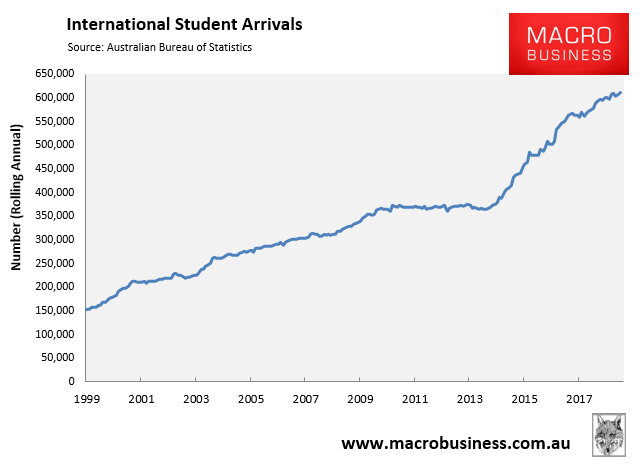
As shown above, the number of international student arrivals has increased by more than two-thirds (246,900) over the past five years.
Other official data shows an equally spectacular rise in international student numbers.
For example, the Department of Home Affairs’ temporary visa database shows the number of student visas on issue rose by 84% between March 2013 and March 2019, from 332,000 to 613,000:
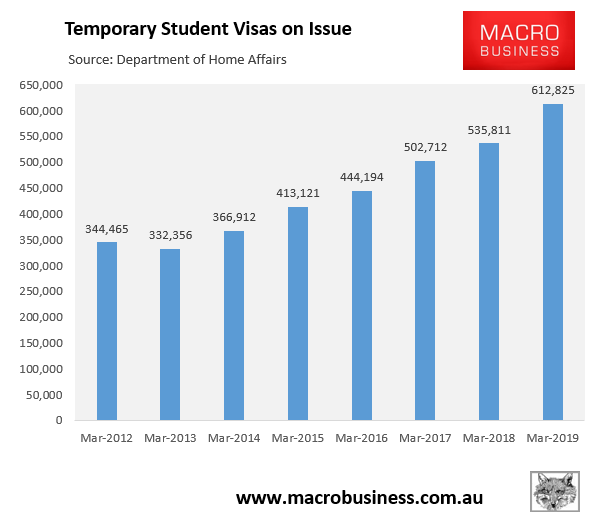
The Department of Education’s international student database also shows that international student enrolments across Australia’s educational institutions ballooned by 89% between 2013 and 2019, from 367,000 to 694,000:
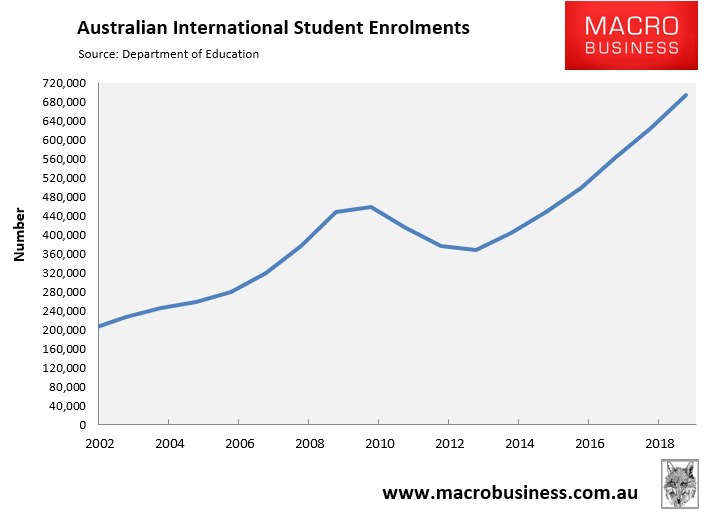
Therefore, while the official data varies, they all are pointing to an epic boom in international student numbers across Australia.
It is also worth mentioning that Australia’s education ‘exports’ – comprising tuition fees and living expenditures – hit a record high $37.7 billion in 2018-19, recording double-digit growth for the fourth consecutive year:
New figures from the Australian Bureau of Statistics show that education export revenue grew 15.5 per cent in 2018-19 and has doubled in the past five years. The strong revenue growth is being driven by expanding student numbers from a resurgent India, which has replaced China as the main growth market.
According to this report, surging enrolments from India (+48%) and Nepal (+32%) drove the export lift, more than offsetting stagnation from China.
This is supported by the Department of Home Affairs’ student visa data, which shows that the number of student visas granted to Indians (+53.5%) and Nepalese (+47.8%) over the second half of 2018 more than offset the 3.3% decline from China:
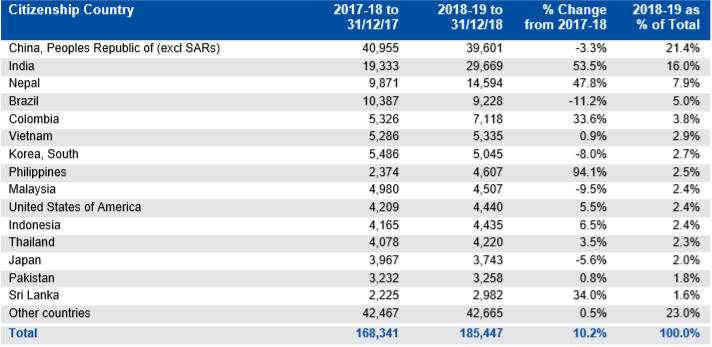
However, while the current situation is rosy, there are stiff headwinds developing that suggest the international student boom is nearing an end:
The Tertiary Education Quality and Standards Agency, which regulates higher education, and the Australian Skills Quality Agency, which regulates vocational education, have signalled they are paying close attention to the international student market.
Education providers recently have seen delays occurring in visa approvals.
International Education Association of Australia chief executive Phil Honeywood said there was a push for “quality over quantity” in international students, and education export revenue was likely to follow a slower growth path…
Mr Honeywood said the sector needed to make further efforts to diversify its source countries.
Indeed, the recent Four Corners report on Australia’s international student trade warned that universities have badly lowered their entry and teaching standards to maximise student enrolments, with students from India performing most poorly. Australia’s higher education regulators have responded accordingly and institutions have been told to lift their game.
The Morrison Government’s recent 30,000 cut to Australia’s permanent migrant intake has also lowered the probability of international students gaining permanent residency, which has reduced the incentive for international students to study in Australia.
Public sentiment has also overwhelmingly turned against international students, with a recent national survey from the University of New South Wales revealing the majority (54%) of Australians want international student numbers to be limited, with the strongest opposition coming from those of university age:
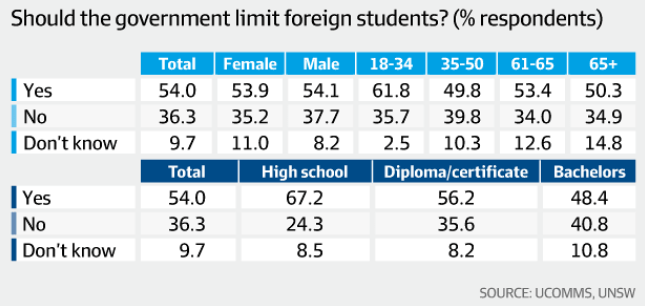
The upshot is that the great international student boom is on borrowed time. The flow of Chinese students is now facing structural decline – due to growing domestic concerns over Chinese interference and the strained political relationship between the two nations. Whereas Indian and Nepalese students are facing higher entry barriers as well as reduced access to permanent residency.

